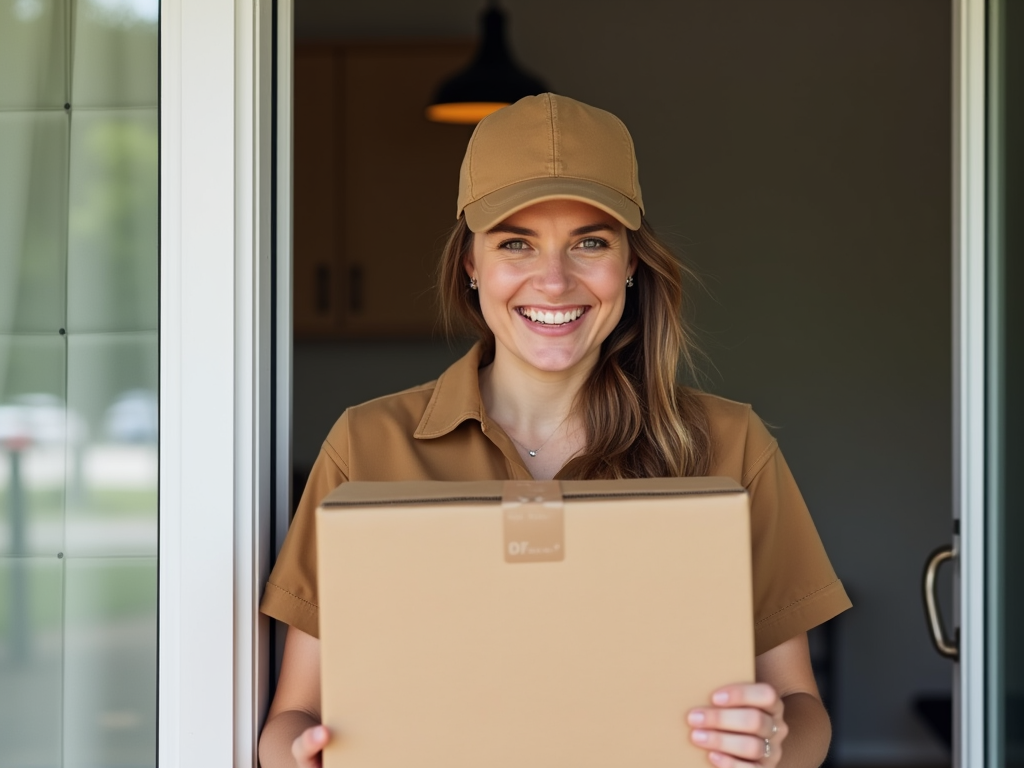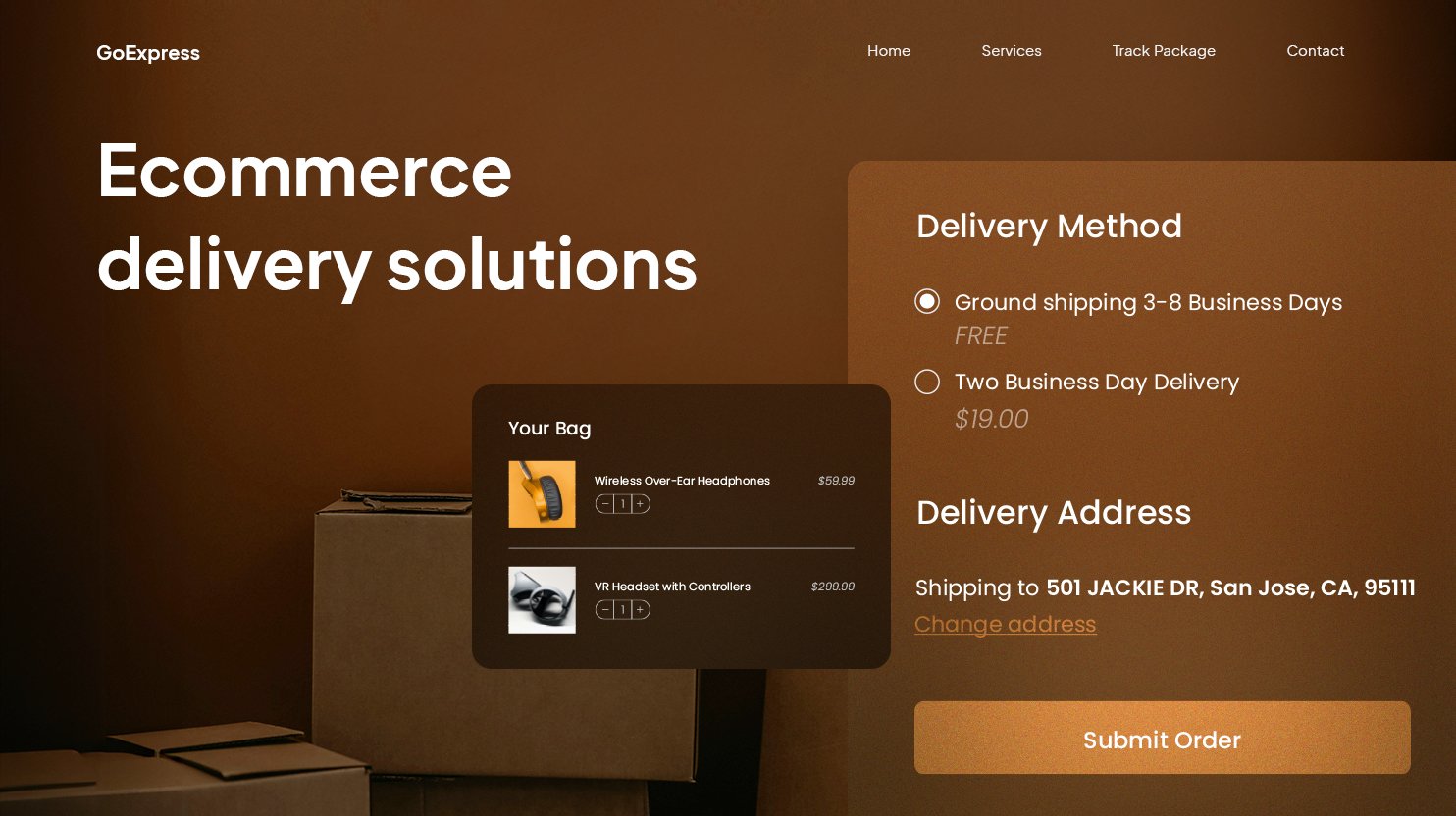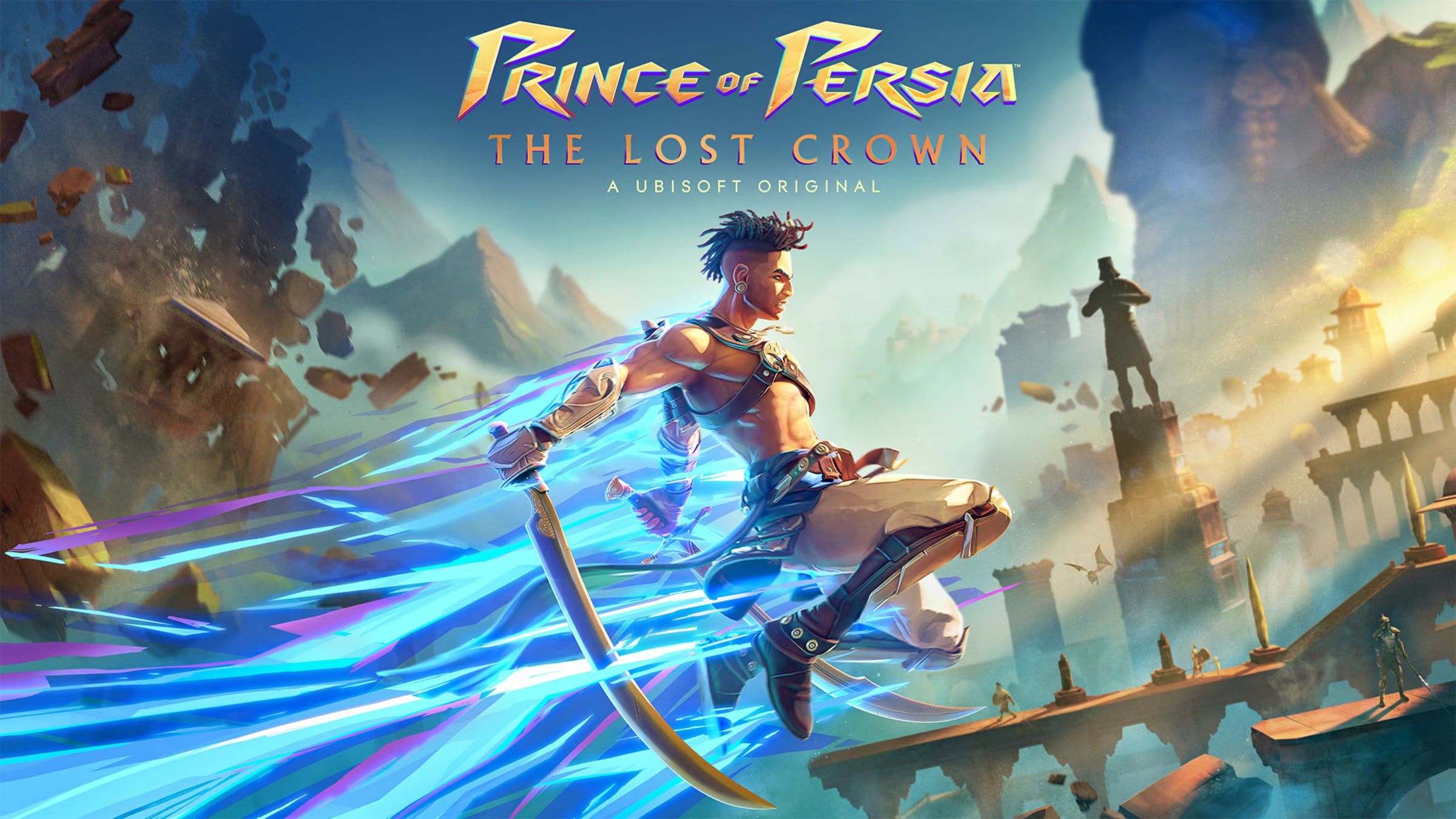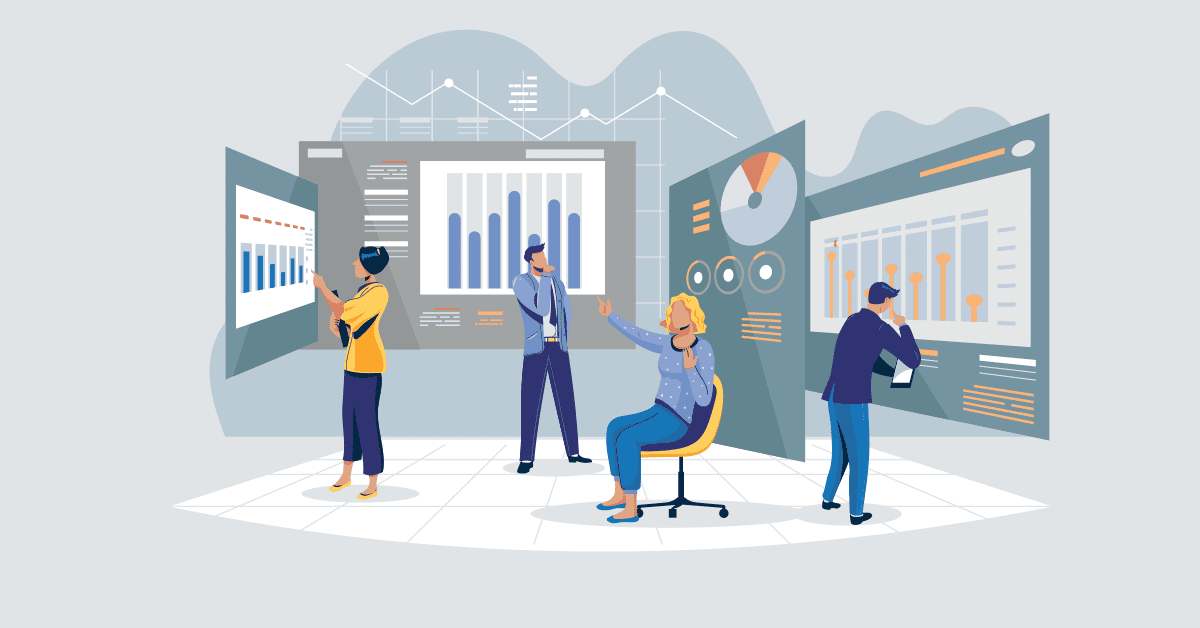Online shopping has changed how we buy things. Getting your orders quickly is now very important. Ecommerce delivery solutions help businesses send products to customers fast and easily. You can choose from many shipping options to get your items to buyers on time.
Big companies like Amazon have made fast shipping normal. People now expect to get their stuff in just a few days. Some even want same-day delivery. This puts pressure on other online stores to keep up. They need good shipping plans to make customers happy.
In this article, we’ll explore how ecommerce delivery solutions have evolved to meet the demands of modern consumers, focusing on various delivery models like drop shipping, self-fulfillment, third-party logistics, and same-day delivery. We’ll also learn about technological advancements, last-mile challenges, and more about online retail logistics.
Create your online store in minutes!
Looking to sell online? Develop and launch your store with 10Web AI Ecommerce Website Builder.
FAQ
What are the best delivery options?
The best delivery options depend on your specific needs, such as speed, cost, and destination. Common choices include standard shipping for budget-friendly options, express delivery for faster service, and same-day delivery for urgent shipments.
How to schedule a delivery?
To schedule a delivery, you can use the iMile app or website, where you can enter your shipment details, select a delivery time, and confirm your order. Alternatively, you can contact customer service for assistance in scheduling your delivery.
What is iMile Delivery?
iMile Delivery is a logistics and delivery service that specializes in providing efficient and reliable shipping solutions for eCommerce businesses. They offer a range of services, including same-day delivery, last-mile logistics, and tracking capabilities to enhance customer satisfaction.
How to contact iMile?
You can contact iMile through their official website, where you’ll find options for customer support via email, phone, and live chat. Additionally, they have a dedicated customer service team available to assist with inquiries and resolve issues.
What is a toll-free customer care number?
A toll-free customer care number is a phone number that allows customers to call a business without incurring charges. This service is typically provided to enhance customer support and make it easier for users to reach out for assistance.
How to download the iMile app?
You can download the iMile app from the Apple App Store or Google Play Store by searching for “iMile.” Once downloaded, simply follow the prompts to create an account and start using the app for your delivery needs.
Which courier services are reliable?
Reliable courier services include well-known companies like FedEx, UPS, DHL, and local providers such as iMile. It’s important to consider factors like delivery speed, tracking capabilities, and customer reviews when choosing a courier.
What are DHL’s services?
DHL offers a wide range of logistics and delivery services, including international shipping, express delivery, freight transportation, and supply chain management. They are known for their global reach and expertise in handling various types of shipments.
How to reach customer support?
You can reach customer support through the contact options provided on the company’s website, such as phone, email, or live chat. Many companies also have dedicated support sections in their apps for quick assistance.
Evolution of ecommerce delivery
Ecommerce delivery has changed a lot over the years. New technology and customer needs have shaped how products get from sellers to buyers.

Historical milestones
In the early days of online shopping, delivery was slow. Orders often took weeks to arrive. The first big change came in the late 1990s when Amazon started offering free shipping on orders over $100.
FedEx and UPS soon joined in, creating special services for online retailers. By the mid-2000s, same-day delivery became possible in some cities.
Tracking packages got easier too. Customers could check where their order was online or by text message.
Impact of technology on shipping
New tech has made shipping faster and smarter. Robots now help pack boxes in warehouses. This speeds things up and cuts down on mistakes.
GPS and smart routing help trucks find the quickest paths. Some companies even use drones for deliveries in hard-to-reach areas.
Big data helps predict what products people will want and where. This lets stores keep items closer to customers, making delivery faster.
Consumer expectations over time
People now want their orders faster than ever. Next-day delivery used to be a luxury. Now many expect it as standard.
Customers also want more control. They like choosing delivery times and spots. Some prefer pickup lockers to home delivery.
Free shipping has become very important. Many shoppers won’t buy if they have to pay for shipping. To meet these needs, stores have had to find new ecommerce delivery solutions.
Why ecommerce delivery is more important than ever
Online shopping has grown hugely in recent years. More people now buy things on the internet instead of going to stores. This means ecommerce shipping matters a lot more today.
Fast delivery is key for happy customers. People want their stuff quickly after they order it. If you can ship fast, shoppers will pick you over other stores.
Shipping costs affect buying choices too. Free or cheap shipping can make people more likely to buy from you. High shipping fees might make them look elsewhere.
Good packaging is also vital. Items need to arrive safely and look nice when opened. This helps create a good impression of your brand.
Returns are another big factor. Easy returns make people feel safer buying online. A smooth returns process can turn unhappy customers into loyal fans.
Ecommerce shipping is now a main way to stand out from rivals. It’s not just about getting products to buyers anymore. It’s about giving a great overall experience that keeps people coming back.

Create your online store in minutes!
Looking to sell online? Develop and launch your store with 10Web AI Ecommerce Website Builder.
Ecommerce delivery models
Ecommerce companies use different ways to get products to customers. These models help businesses manage costs and meet customer needs.
Drop shipping
Drop shipping lets online sellers offer products without keeping stock. When a customer buys an item, the seller orders it from a supplier. The supplier then ships it straight to the customer. This model has low startup costs and less risk. You don’t need to buy inventory up front or manage a warehouse.
Drop shipping works well for new businesses or those testing new products. It’s also good if you have limited storage space. But you have less control over quality and shipping times. Profit margins can be smaller too, since suppliers set their prices.
Self-fulfillment
In self-fulfillment, you handle all parts of order processing and shipping yourself. You store products, pack orders, and send them out. This gives you full control over the whole process. You can add personal touches to packaging and fix issues quickly.
Self-fulfillment works best for small businesses with few orders. It’s good when you make custom products or need special handling. But it takes a lot of time and work. As your business grows, it can be hard to keep up with orders. You also need space to store inventory and packing supplies.
Third-party logistics (3PL)
3PL providers handle warehousing and shipping for you. They store your products, pack orders, and send them out. This frees up your time to focus on other parts of your business. 3PLs often have better shipping rates due to their large volume.
Using a 3PL works well for growing businesses with steady sales. It’s good if you sell on multiple channels or need special storage. 3PLs can handle returns and offer faster shipping to more places. But it costs more than handling things yourself. You also have less control over the process.
Same-day delivery
Same-day delivery gets products to customers very fast. Orders are delivered within hours, often on the same day they’re placed. This ecommerce delivery solution is growing as more shoppers want quick service.
Same-day delivery works best in cities or dense areas. It’s good for time-sensitive items like food or last-minute gifts. But it’s expensive and hard to do over large areas. You need a good system to process orders fast. Some businesses partner with local stores or use services like Instacart for same-day options.
Technology in ecommerce logistics
New tools are changing how online stores handle shipping and delivery. These systems make it easier to get products to customers quickly and keep track of orders.
Warehouse automation
Robots and machines now do many jobs in warehouses. They can pick items from shelves and pack boxes faster than people. Some warehouses use conveyor belts to move products around. Others have robotic arms that lift heavy things.

Automated storage systems keep track of where everything is. They tell workers or robots exactly where to find each item. This cuts down on mistakes and saves time.
Software manages it all. It decides the best way to organize products and tells machines what to do. This helps warehouses run smoothly even when they’re very busy.
Route optimization software
Delivery trucks now use smart programs to plan their routes. These programs look at traffic, weather, and delivery addresses. Then they figure out the fastest way to get packages to customers.
The software can change routes on the fly if there’s a problem. If a road is closed or traffic is bad, it finds a new path. This helps drivers avoid delays and get more deliveries done each day.
Some programs also group nearby deliveries together. This saves gas and time. It’s good for the environment and helps keep shipping costs down.
Real-time tracking systems
You can now follow your package’s journey from start to finish. GPS devices in delivery trucks show where they are at all times. Scanning barcodes updates the package location at each step.
Customers can check their phone or computer to see where their order is. They get alerts when the package is out for delivery or arrives. This cuts down on missed deliveries and keeps customers happy.
Companies use this data too. They can spot problems and fix them fast. If a lot of packages are late in one area, they might add more trucks or change routes.
These tracking systems are a key part of ecommerce delivery solutions. They help online stores keep their promises about delivery times.
Omnichannel Integration
Omnichannel integration involves unifying various sales channels—such as online stores, physical retail locations, mobile apps, and social media platforms—into a single, cohesive system. This strategy enhances operational efficiency and elevates the customer experience by providing a seamless interaction across all touchpoints.
By synchronizing inventory, pricing, and customer data, businesses can offer services like buy-online-pickup-in-store (BOPIS), easy returns across channels, and consistent promotions. This integration ensures that customers enjoy a unified shopping experience, whether they’re browsing online or visiting a brick-and-mortar store. For e-commerce delivery solutions, omnichannel integration allows for more flexible fulfillment options and optimized logistics, ultimately leading to increased customer satisfaction and loyalty.

Create your online store in minutes!
Looking to sell online? Develop and launch your store with 10Web AI Ecommerce Website Builder.
Last-mile delivery challenges and solutions
Ecommerce businesses face several hurdles in getting products to customers’ doorsteps. These issues affect both urban and rural areas, while also raising environmental concerns.
Urban congestion
Cities present unique obstacles for delivery drivers. Traffic jams slow down routes and make it hard to meet delivery windows. Parking is scarce, forcing drivers to circle blocks or risk tickets.
Some companies use bikes or scooters to navigate crowded streets faster. Others set up local hubs where customers can pick up packages. Smart routing software helps plan the most efficient paths through city traffic.
Apps now let customers track their deliveries in real-time. This cuts down on missed deliveries when people aren’t home. It also helps drivers avoid wasting time on failed attempts.
Rural delivery barriers
Long distances between stops make rural deliveries costly. Sparse populations mean fewer packages per route. Bad roads and harsh weather add extra challenges.
Drones show promise for reaching remote areas quickly. Some companies partner with local stores as pickup points. This saves on fuel and driver time.
Mobile depots bring packages closer to rural customers. These are trucks that act as moving warehouses. They park in central locations where people can collect their items.
Sustainable delivery practices
Ecommerce shipping creates a lot of waste and emissions. Companies are looking for greener ways to get packages to customers.
Electric vehicles cut down on pollution from delivery fleets. Some businesses use bikes or even walk deliveries for short distances.
Reusable packaging helps reduce waste. Customers can return boxes and bags to be used again. Some firms offer package-free options for certain products.
Route optimization software finds the shortest paths between stops. This saves fuel and cuts down on emissions. Grouping deliveries to the same area also helps.
Packaging innovations
Ecommerce packaging is changing rapidly. New materials and technologies are making packages more eco-friendly, trackable, and eye-catching. These changes help online stores save money and please customers.
Biodegradable materials
Many companies now use packaging that breaks down naturally. This cuts waste and helps the planet. Some popular options are:
- Cardboard made from recycled paper
- Plant-based plastics from corn or sugarcane
- Mushroom-based foam as packing material
These materials protect items just as well as traditional packaging. They cost about the same too. But they’re much better for the environment. As more shoppers care about sustainability, biodegradable packaging gives stores an edge.
Smart packaging
New tech is making packages smarter. This improves ecommerce delivery solutions in several ways:
- GPS trackers let customers see where their order is in real-time
- Temperature sensors make sure food stays fresh
- QR codes link to product info or assembly videos
Smart packaging helps cut theft and damage. It also makes the unboxing experience more fun and helpful for shoppers. While it costs more upfront, many stores find it pays off through happier customers and fewer lost packages.
Package design and branding
How a package looks matters more than ever for online stores. Good design can:
- Make your brand stand out
- Protect items better
- Be easier to open
- Use less material
Many stores now use custom tape, colorful boxes, or special inserts to wow customers. Some even add scents or sounds when the box opens. This turns a simple delivery into a memorable event. It can boost loyalty and word-of-mouth buzz.

Create your online store in minutes!
Looking to sell online? Develop and launch your store with 10Web AI Ecommerce Website Builder.
Cash on delivery remittance
Cash on delivery (COD) is a payment method where customers pay for their purchases upon delivery instead of in advance. This option is popular in regions where digital payments are less common or where customers prefer to inspect products before paying. Ecommerce delivery providers offering COD services collect the payment at the doorstep and ensure quick remittance back to the retailer.
COD remittance is crucial for maintaining cash flow and customer trust. Delivery providers must handle cash securely, manage potential risks, and transfer funds promptly to the sellers. Challenges include the risk of theft, delays in fund transfers, and additional operational costs. To address these issues, providers implement secure cash handling protocols, use technology for real-time payment tracking, and establish clear timelines for remitting funds to retailers.
Customer experience and delivery
Good delivery shapes how customers view online shopping. It can make or break their opinion of a store. Stores need to focus on key areas to keep customers happy.
Personalization
Stores can tailor deliveries to each customer’s needs. This makes people feel valued. You might get to pick a delivery time that works for you. Or you could choose where your package is left. Some stores let you add gift wrapping or notes. Others remember your past choices to make future orders easier.
Personalized tracking is another useful feature. You can see exactly where your package is at any time. This gives you peace of mind. It also helps you plan for when your items will arrive.
Communication and transparency
Clear info is key for good ecommerce shipping. You should know delivery costs up front. Estimated arrival dates should be easy to find. Once you order, you need updates. Emails or texts can tell you when your package ships. They can also alert you to any delays.
Some stores use maps to show where your delivery is. This helps you follow its journey. Others give you the name and photo of your delivery person. This adds a personal touch and makes you feel more secure.
Returns and exchanges
Easy returns are a big part of good customer service. You should be able to print return labels at home. Some stores even include them with your order. Free returns can make you more likely to buy.
Clear return policies are a must. You need to know how long you have to send items back. It helps to know if you’ll get a refund or store credit. Some stores now offer at-home pickup for returns. This saves you a trip to the post office.
Exchanges should be simple too. You might want a different size or color. Good ecommerce delivery solutions make this process quick and easy.
AI-powered insights for delivery
Artificial Intelligence (AI) is transforming ecommerce delivery by providing insights that optimize processes and enhance decision-making. By analyzing large volumes of data, AI algorithms help businesses streamline operations and improve efficiency.
AI applications in delivery include:
- Demand forecasting: Predicting customer orders to manage inventory levels effectively.
- Route optimization: Calculating the most efficient delivery routes considering real-time traffic and weather conditions.
- Predictive maintenance: Anticipating equipment needs to prevent downtime in logistics operations.
- Customer behavior analysis: Understanding purchasing patterns to personalize services and promotions.
By leveraging AI-powered insights, e-commerce companies can reduce costs, accelerate delivery times, and offer a better customer experience. This integration leads to smarter decision-making and a competitive edge in the fast-paced online retail market.
Conclusion
Efficient ecommerce delivery is more crucial than ever in today’s competitive online retail market. Advances in technology and shifting consumer expectations have transformed shipping from slow processes to options like same-day delivery. Retailers must adopt suitable delivery models, leverage technological innovations, and address last-mile challenges while complying with regulations.
By focusing on personalization, clear communication, easy returns, and sustainable practices, businesses can enhance customer satisfaction and loyalty. Understanding cross-border complexities and effective risk management are essential for growth and global expansion. Ultimately, optimizing last-mile logistics is about delivering a seamless and positive customer experience, which sets successful retailers apart in a crowded marketplace.











